#Trombidiidae
Text


hi ronald! one of the prettiest mites you ever did see (genus ronaldothrombium)
#velvet mite#mite#arachnids#arachnida#acari#trombidiformes#trombidioidea#trombidiidae#ronaldothrombium#<- arguably can't be 100% sure that it's ronaldothrombium because they have not been described as adults#and while ray fisher did rear larvae (i think off of juvenile salticids) that hasnt been published#but who give a shit
2K notes
·
View notes
Text
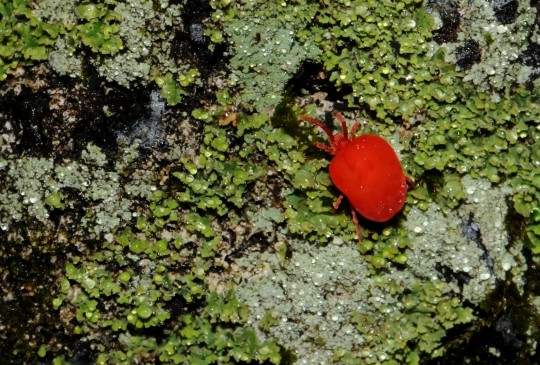
velvet mite on lichen
321 notes
·
View notes
Text
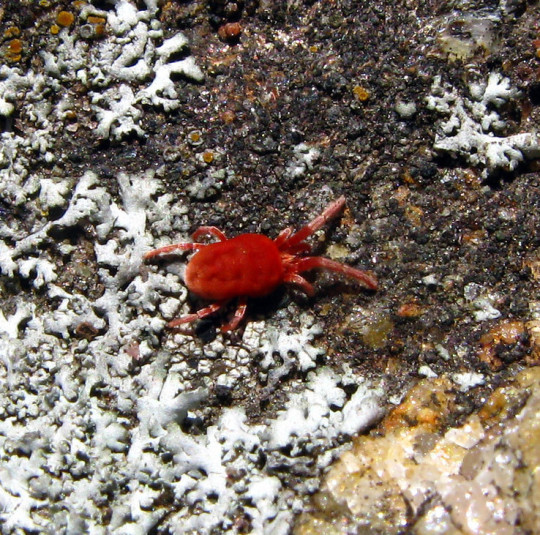
A red velvet mite (Allothrombium sp.) in Nantahala National Forest, North Carolina, USA
by Alan Cressler
#velvet mite#mites#arachnids#allothrombium#Trombidiidae#Trombidiformes#arachnida#arthropoda#wildlife: north carolina#wildlife: usa#wildlife: north america
63 notes
·
View notes
Text

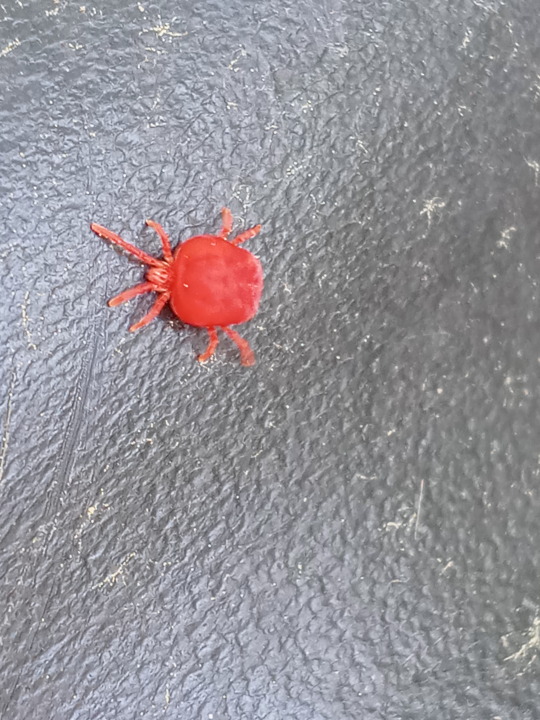



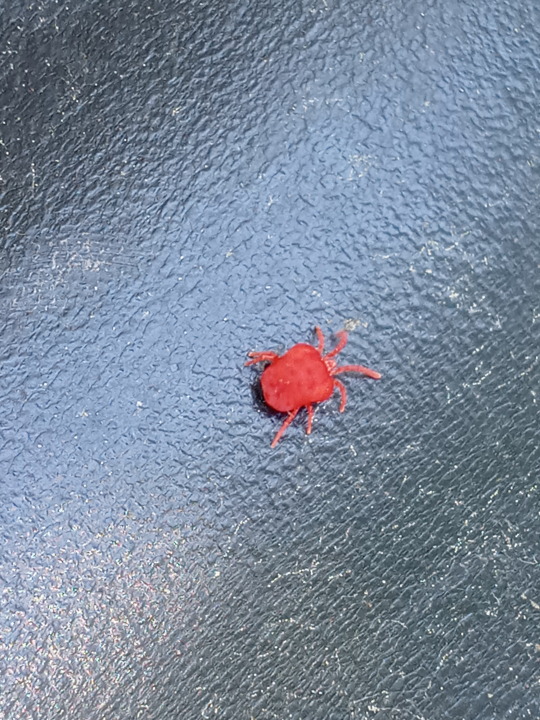
[PHOTOS TAKEN: APRIL 11TH 2023 | Image IDs: Multiple angles of a bright red velvet mite (Arachnid of the family Trombidiidae) crawling on a rough, dirty, black, plastic surface /End ID]
I love this thing's color, it's rare that I see a mite that's THIS bright!
#Mite#Mites#Trombidiidae#velvet mite#Arachnid#Arachnids#Arachnophobia#arthropods#Bugs#Bug#invertebrates#Bugblr#Photos#Photo#Wasp House Buzzing
66 notes
·
View notes
Text
So I have a little Trombidium mite in a teeny tiny terrarium that I raised from a pupa (after finding him pupating in a container I put a firefly in) for scientific purposes. I highkey have just left him in the little terrarium for several months now, and he routinely just Disappears and I don't see him for a few weeks at a time. Well he disappeared like three months back, and I kinda forgot about him until like last week, when I used a stick to prod through the dirt to try and find him. I did not succeed. I resigned myself to waiting for the freshly misted dirt to dry before digging out his corpse to send to an acarologist friend, and then put that off too.
So anyways, I just got home today, and bro was just out crawling around on a leaf.
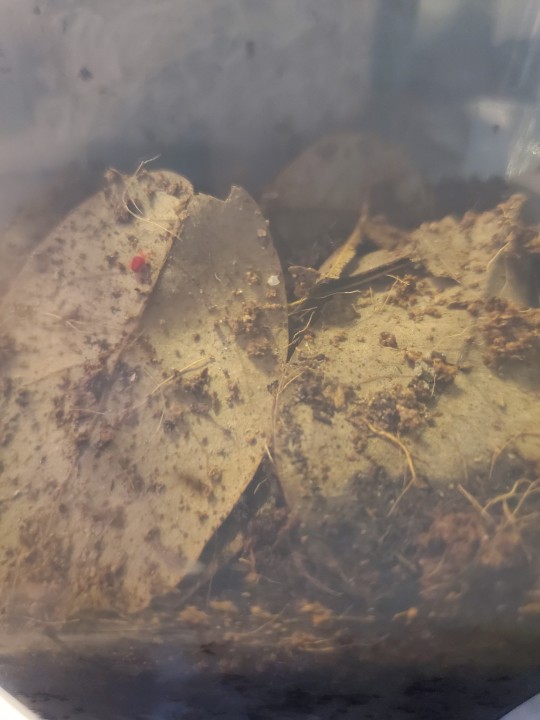

Remind me not to underestimate him again.
#he needs a name#mite#mites#Trombidiidae#Trombidiformes#Trombidium#velvet mite#arthropods#bugs#arachnids#red bug#little baby man#entomology#acarology#pet bugs#i fucking love mites#bugs /
2 notes
·
View notes
Text
À la rencontre d'un arthropode qui a le goût (amer) de la quinine et du piment habanero !
See on Scoop.it - EntomoNews
Known as the "King of Sting," Justin Schmidt has dedicated his life to the study of insects, mostly the stinging kind. In a recent paper, he explores giant velvet mites – elusive creatures of the arachnid family. Among his discoveries: Virtually no one wants to eat them, suggesting the mites have to contend with few, if any, predators.
Meet the bug that tastes 'like quinine with habanero'
By Daniel Stolte, University Communications
Jan. 23, 2023
[Image] A giant velvet mite with its favorite prey, a winged termite. Jillian Cowles
-------
NDÉ
Traduction
Surnommé le "roi de la piqûre", Justin Schmidt a consacré sa vie à l'étude des insectes, surtout ceux qui piquent. Dans un récent article, il a publié l'aboutissement de plus de 30 ans de recherche sur les acariens géants du velours - des créatures insaisissables de la famille des arachnides.
Parmi ses découvertes : Pratiquement personne ne veut les manger, ce qui suggère que les acariens doivent faire face à peu de prédateurs, voire aucun.
Qu'est-ce qui est velouté, rouge, de la taille d'un pois et que l'on peut voir courir sur le sol dans le désert du Sud-Ouest après une pluie torrentielle ? Si vous n'en avez aucune idée, vous n'êtes pas seul. Selon Justin Schmidt, chercheur adjoint au département d'entomologie de l'université d'Arizona, les acariens géants du velours sont des créatures si insaisissables qu'on en sait peu sur elles.
M. Schmidt, que l'on a surnommé "le roi de la piqûre" en raison de ses exploits à travers le monde à la recherche d'insectes piqueurs, s'intéresse à ces acariens dans un article récemment publié qu'il a cosigné avec sa femme, Li Schmidt. Il qualifie cet article, publié dans le Journal of Arachnology, de "point culminant de plus de 30 ans de recherche sur les acariens géants de velours".
University of Arizona News s'est entretenu avec Schmidt au sujet des découvertes surprenantes qu'il a faites en observant ces minuscules arachnides, en les opposant à des prédateurs et... en les goûtant.
L'étude
Big, bad, and red: Giant velvet mite defenses and life strategies (Trombidiformes: Trombidiidae: Dinothrombium) - The Journal of Arachnology, 10.08.2022 https://bioone.org/journals/the-journal-of-arachnology/volume-50/issue-2/JoA-S-21-019/Big-bad-and-red--Giant-velvet-mite-defenses-and/10.1636/JoA-S-21-019.full
0 notes
Photo
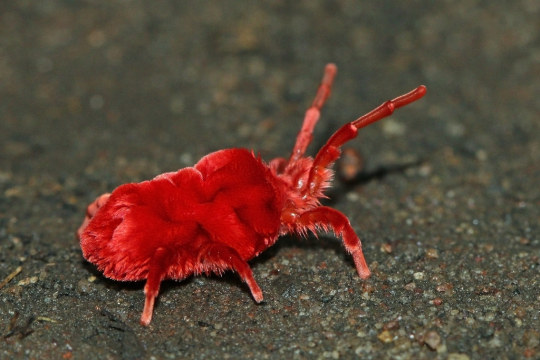
Giant red velvet mite (Dinothrombium sp.) in Ghana
Charles Sharp
570 notes
·
View notes
Photo
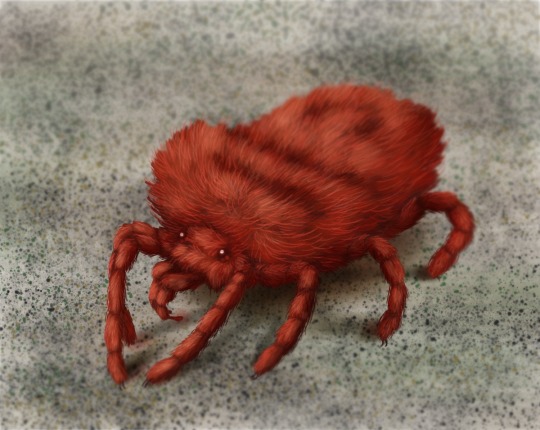
Red velvet mite.
12 notes
·
View notes
Photo
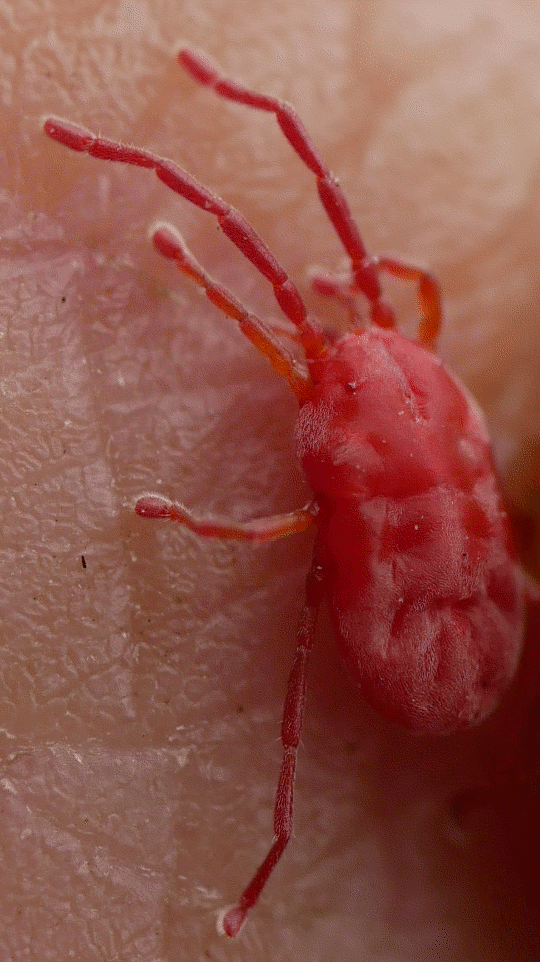
42 notes
·
View notes
Photo
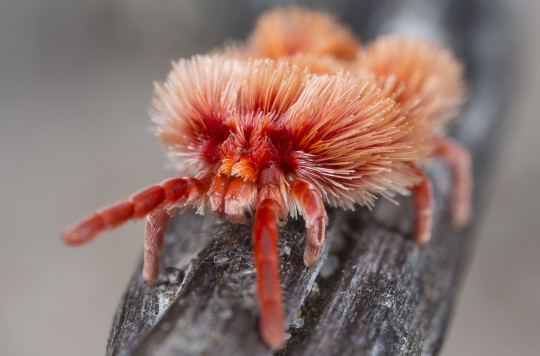

Red velvet mite (Mesothrombium sp.)
Photo by Jurgen Otto
#fave#red velvet mite#velvet mite#mesothrombium#trombidiinae#trombidiidae#trombidioidea#parasitengona#anystina#prostigmata#trombidiformes#acariformes#acari#arachnida#chelicerata#arthropoda#panarthropoda#ecdysozoa#beautiful species
106 notes
·
View notes
Photo
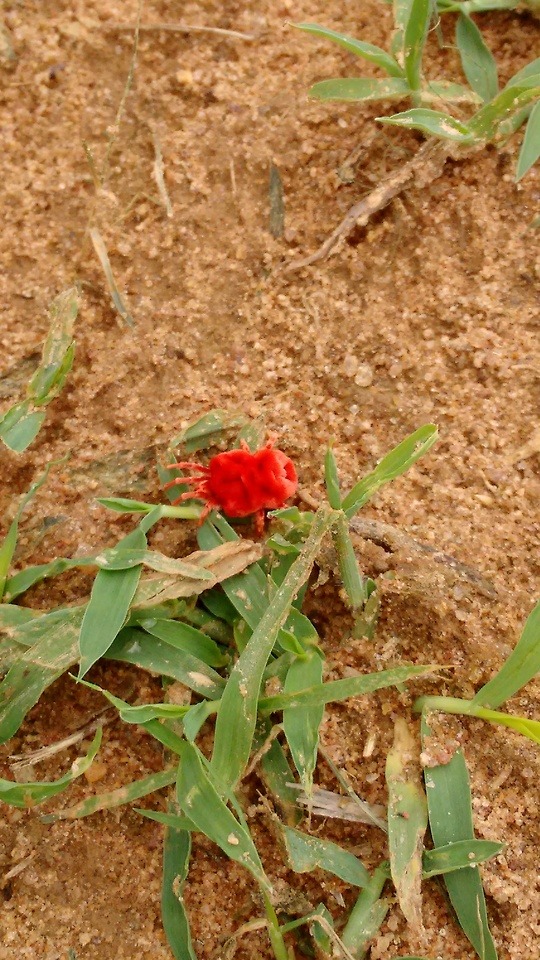
A red velvet mite in Krishnapura village.
2 notes
·
View notes
Photo
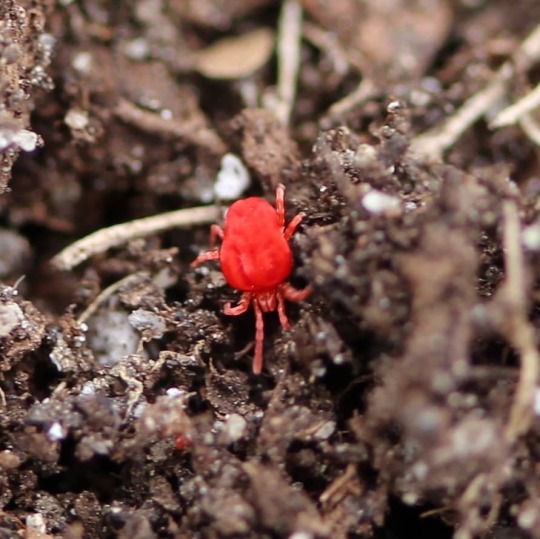
A True Velvet Mite (of the Family Trombidiidae) in our garden, May 2018. Mites and Ticks form a massive subclass of Arachnids (which also includes spiders and scorpions), with about 40 000 different species. Many are impossible to see without a microscope or hand lens, but some velvety red mites can be seen in garden soil because of their bright red coloration and their relatively large size (several millimeters as opposed to smaller than a millimeter). The bright colour is possibly because of pigments that protect them from harmful light. Most Velvet mites are predators of insect or spider eggs and their larvae are parasitic on insects. . . . . . . . #nature #ontario #mites #acari #trombidiidae #gardenwildlife #backyardwildlife #macrophotography #invert_macro #norfolkcounty #norfolkwild #blognorfolk #acariformes #simcoeontario (at Simcoe, Ontario) https://www.instagram.com/p/B_fCvVbAj10/?igshid=106wrgki8r5sz
#nature#ontario#mites#acari#trombidiidae#gardenwildlife#backyardwildlife#macrophotography#invert_macro#norfolkcounty#norfolkwild#blognorfolk#acariformes#simcoeontario
1 note
·
View note
Photo
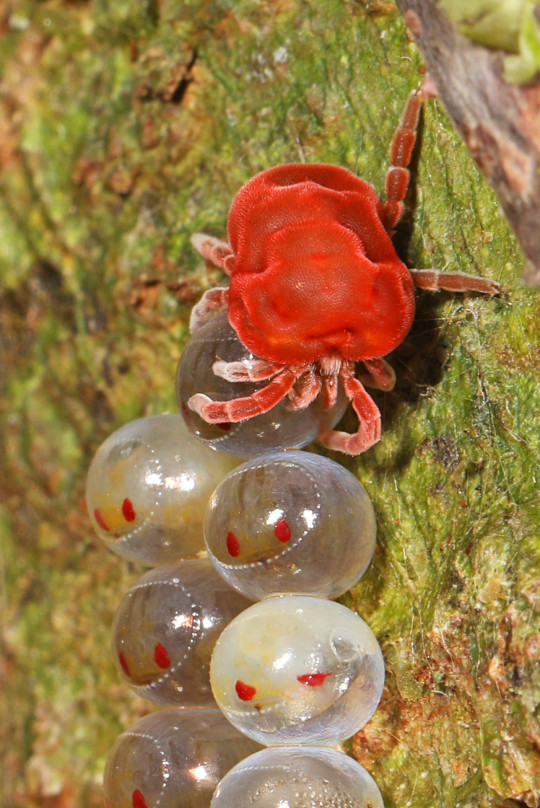
Velvet mite, Trombidium sp.?, Trombidiidae, with Hemipteran eggs
Photographed in Ecuador by Judy Gallagher
#animals#curators on tumblr#bugs#arachnids#mite#velvet mite#red velvet mite#Trombidium#egg#eggs#congregation#cluster#true bugs#Hemiptera#one nice bug
1K notes
·
View notes
Text
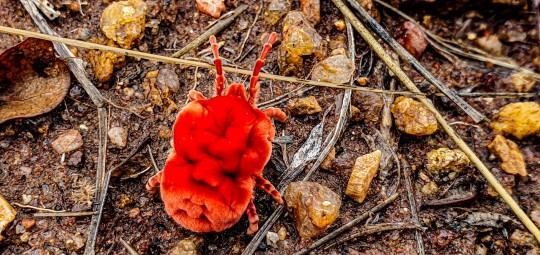
Red velvet mite (Trombidiidae)
Mites are tiny creatures closely related to ticks, they are essentially arthropods, they are found everywhere and can survive in any tipe of habitat.
It has been observed that these red velvet Mites live under the surface of earth and only emerge once it has rained usually in large numbers.
Red velvet mites have a extremely elaborate mating ritual - adult males deposit spermatophore on grass, twings or plant stalks this is known as "love gardens" - they then make intricate silk trails leading to this "love garden" leading females to the spot. If she is impressed she will then sit on the spermatophore.
#red velvet#wildlifephotography#safari#nature#underafricanskies#buyelaeafrica#wildlife#thisisafrica#conservation#facts#fieldguide#tourism sa#africansafaris#safarispecialists#naturelovers
2 notes
·
View notes
Photo

Mites like this adorable bright fuzzykin are mighty contributors to the world around us. Some recycle nutrients in soils that so much other life relies on and others, like this red velvet mite (Trombidiidae) eat troublesome pests. The first global study on them recently found mite extinctions are occurring shocking 1,000 faster than they were before we humans started to really mess with things. 📷 : Jean and Fred Hort/Sullivan, Austral Ecology, 2020
17 notes
·
View notes
Photo
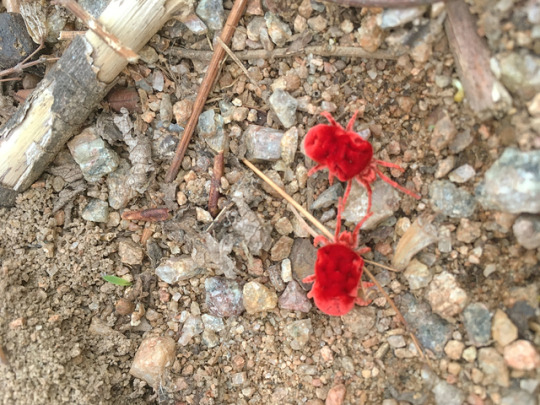
#naturetrek with #trombidiidae #redvelvetmites😍❤️ Truly riveting facts about #trombidiidae The oil extracted from these #redvelvetmite is used as a folk #medicine in #northerindia to #treat #paralysis 🌳🌳 Source: #Animalsake @hydkites (at Hyderabad Kites)
#paralysis#animalsake#naturetrek#redvelvetmites😍❤️#treat#northerindia#redvelvetmite#medicine#trombidiidae
0 notes